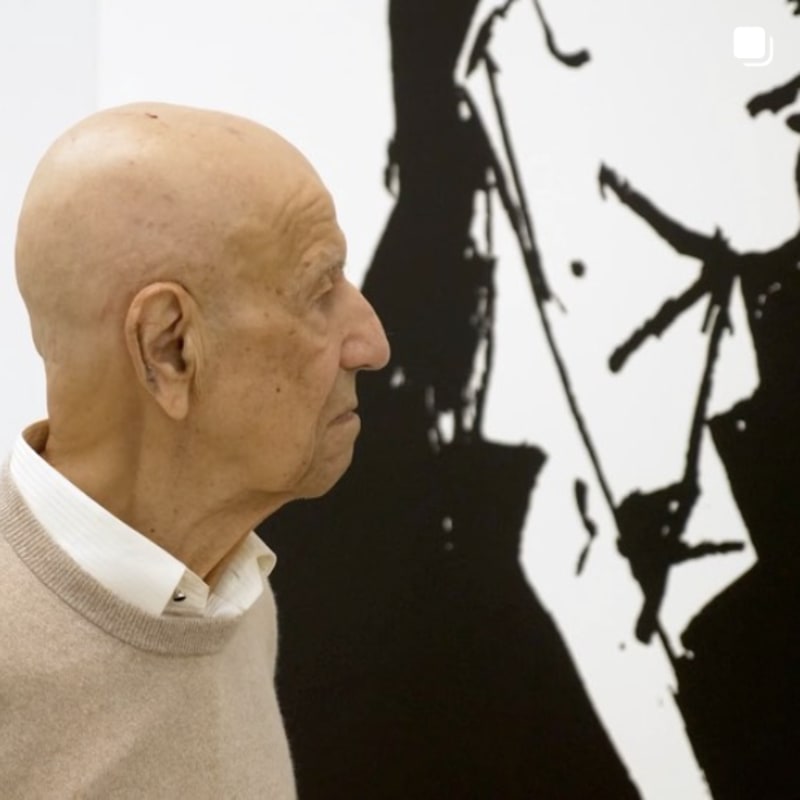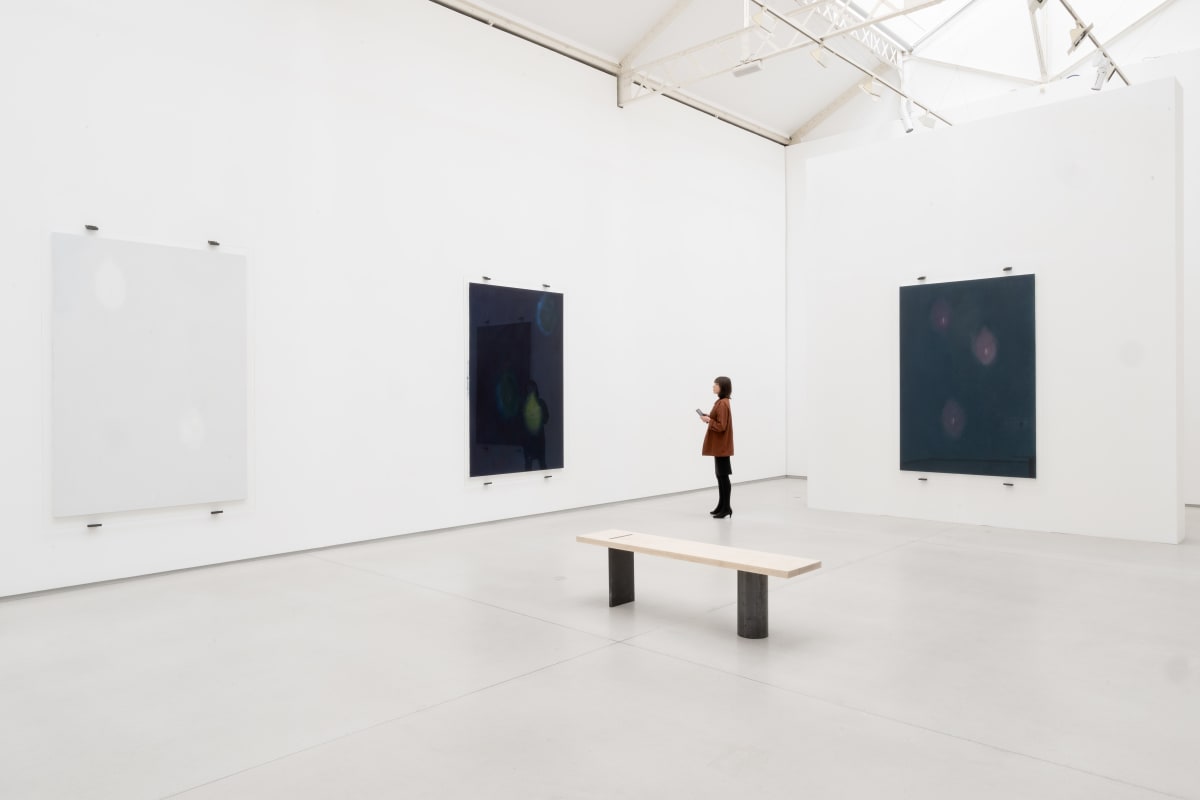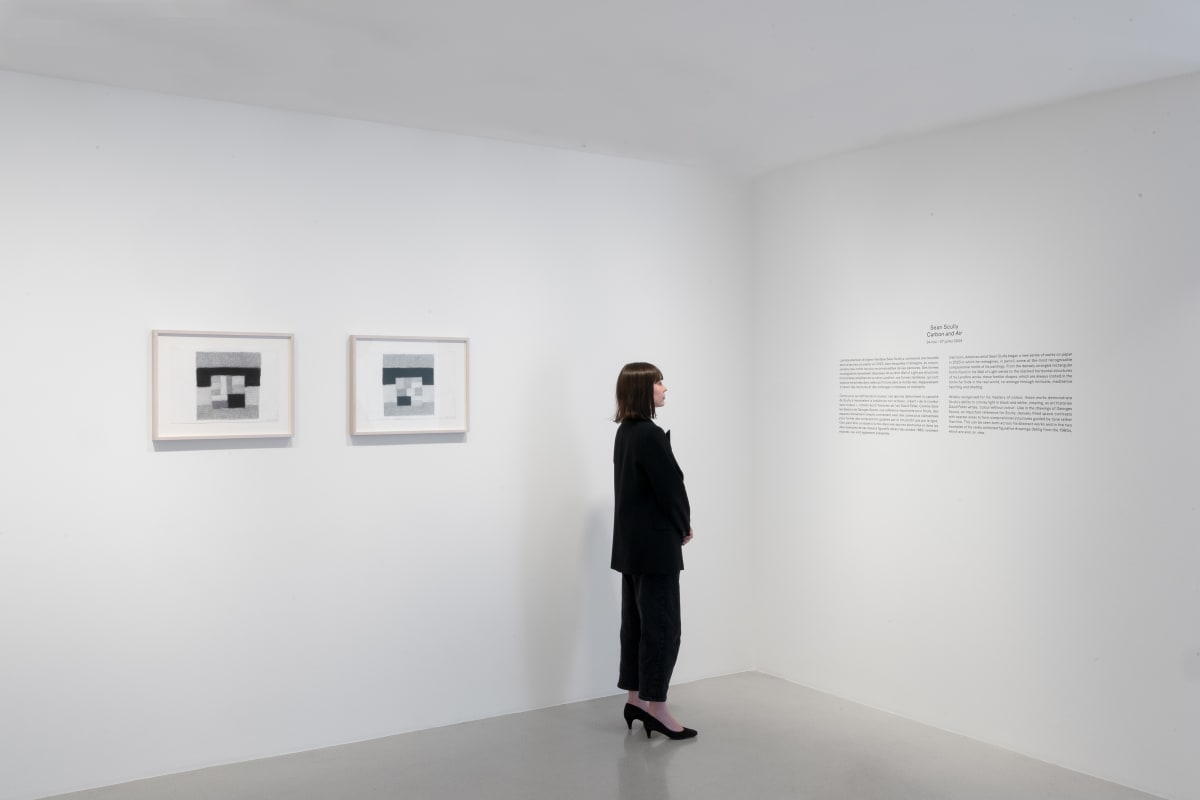Overview
Part of Cory Arcangel’s series of Scanner Paintings begun in 2010, the four new works on view in the exhibition 3– are based on depictions of various leisurewear textiles. The artist scans trousers from popular consumer brands, to which he adds his signature. He then prints enlarged details on IKEA LINNMON tabletops, which he combines in a collage-like manner to create his large-scale paintings. Arcangel’s most recent works reveal a new, minimalist quality in his œuvre, which contrasts with the early, brightly-coloured works from the series.
While previous depictions of leggings, sweatpants, tracksuits, daisy dukes and ripped jeans employed a full palette, Arcangel’s most recent works veer towards abstraction. Earlier works from the series prominently feature various labels and logos, highlighting the growing global influence of sports brands throughout the 2010s, which are no longer necessary in the new works. Three white lines on a black background suffice to identify the Adidas trousers as an integral part of contemporary pop culture.














































































































































































